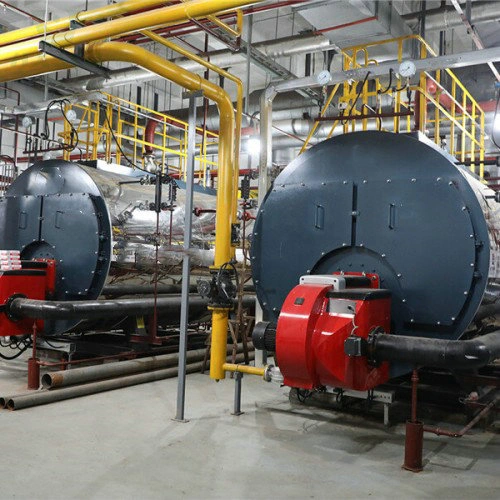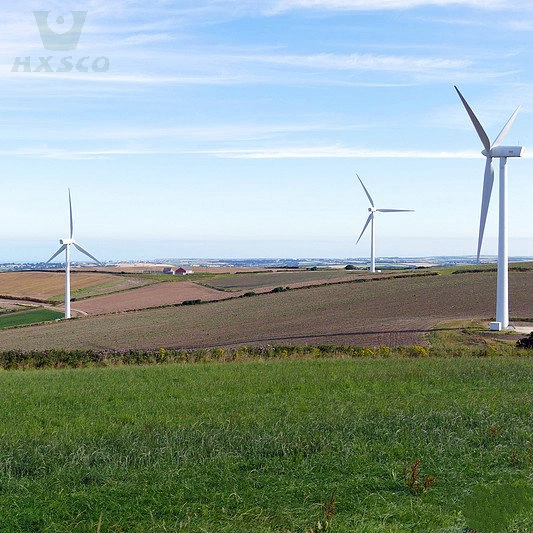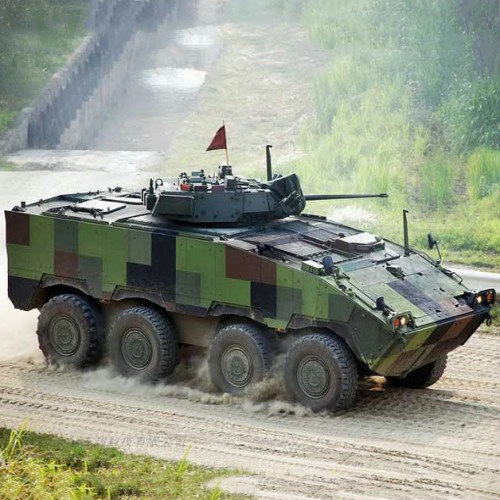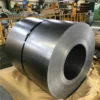What Is Carbon Steel Plate?
Carbon Steel Plate stands as the backbone of many industries, forming the very foundation of structures that shape our modern world. Let’s delve into the intricacies of Carbon Steel Plate, exploring its composition, and unraveling the crucial role played by carbon content in defining its properties.
Defining Carbon Steel Plate: The Cornerstone of Structural Brilliance
At its essence, a Carbon Steel Plate is a robust and versatile material crafted by alloying iron with varying amounts of carbon. This alloying process empowers the steel with enhanced strength, durability, and malleability, making it a preferred choice across diverse industrial applications. Carbon Steel Plates serve as the building blocks for construction, machinery, transportation, and numerous other sectors that demand resilience and reliability.
Composition: Crafting Strength through Precision
The composition of Carbon Steel Plates is meticulously engineered to achieve a delicate balance between iron and carbon. While the primary component is iron, carbon is strategically infused to impart specific qualities. The carbon content in Carbon Steel Plates typically ranges from 0.05% to 1.5%, determining the steel’s classification and influencing its mechanical properties.
The Crucial Role of Carbon Content
Carbon, in its various concentrations, acts as a game-changer in defining the properties of Carbon Steel Plates. The relationship between carbon content and steel properties is a finely tuned equilibrium, where slight adjustments can lead to substantial transformations.
Strength: The carbon content directly correlates with the strength of the steel. Higher carbon concentrations result in increased hardness and strength, making the Carbon Steel Plate resilient against wear and tear in demanding applications.
Toughness: Achieving the perfect balance of toughness is an art in the manufacturing of Carbon Steel Plates. Adequate carbon content ensures a robust and durable structure while maintaining the flexibility required to withstand dynamic loads.
Malleability: Carbon, when present in optimal proportions, enhances the malleability of the steel, allowing it to be easily shaped and formed into various structures. This makes Carbon Steel Plates highly adaptable to diverse manufacturing processes.
Carbon Steel Plate’s significance
Carbon Steel Plate’s significance lies in its ability to meet the demanding requirements of diverse industries. From constructing towering skyscrapers to fabricating intricate machinery, the versatility of Carbon Steel Plates is unmatched. The nuanced interplay of carbon and iron transforms a simple alloy into a material that excels in strength, durability, and adaptability.
In the world of construction and manufacturing, precision is paramount. Carbon Steel Plate suppliers, like HXSCO, understand this intricate dance between composition and application. As seasoned experts in the field, Carbon Steel suppliers play a pivotal role in providing tailored solutions to industries that rely on the exceptional qualities of Carbon Steel Plates.
Types Of Carbon Steel Plate
When it comes to Carbon Steel Plate, the diversity in types mirrors the vast applications and industries they cater to. At HXSCO, we take pride in offering a range of Carbon Steel Plate that not only meet but exceed the expectations of various sectors. Let’s navigate through the spectrum of Carbon Steel Plate in our inventory, shedding light on their unique characteristics and the tailored applications they serve.
Carbon Steel Plate Type A: Structural Steel Plates
Overview: Structural Steel Plates are the backbone of construction projects, providing the foundational support needed for buildings, bridges, and infrastructure.
Composition: These plates boast a balanced composition, with moderate carbon content, ensuring a harmonious blend of strength and flexibility.
Applications: Ideal for constructing high-rise buildings, bridges, and other critical infrastructure where structural integrity is paramount.
Industries: Construction, civil engineering, and architectural projects benefit from the reliability and load-bearing capacity of Structural Steel Plates.
Carbon Steel Plate Type B: Pressure Vessel Quality (PVQ) Plates
Overview: PVQ Plates are designed to withstand high-pressure conditions, making them indispensable for applications in boilers and pressure vessels.
Composition: These plates exhibit elevated carbon content, enhancing their resistance to corrosive and high-temperature environments.
Applications: Widely used in the manufacturing of boilers, storage tanks, and pressure vessels where the demand for durability and reliability is critical.
Industries: Energy, petrochemical, and manufacturing sectors heavily rely on PVQ Plates to ensure the safe containment of pressurized substances.
Carbon Steel Plate Type C: Abrasion Resistant Plates
Overview: Abrasion Resistant Plates are crafted to endure wear and tear, making them suitable for applications exposed to abrasive conditions.
Composition: These plates feature higher carbon and alloy content, providing exceptional hardness and resistance to abrasion.
Applications: Essential for equipment subjected to abrasive materials, such as mining machinery, conveyors, and earth-moving equipment.
Industries: Mining, construction, and manufacturing sectors benefit from the prolonged lifespan and reduced maintenance costs of Abrasion Resistant Plates.
Carbon Steel Plate Type D: High-Strength Low-Alloy (HSLA) Plates
Overview: HSLA Plates strike a balance between strength and weight, offering a lightweight yet durable solution for various applications.
Composition: These plates incorporate alloying elements, such as manganese and vanadium, to enhance strength while maintaining weldability.
Applications: Suitable for lightweight structures, transportation equipment, and machinery where a high strength-to-weight ratio is crucial.
Industries: Automotive, aerospace, and manufacturing sectors rely on HSLA Plates to optimize performance without compromising on structural integrity.
Carbon Steel Plate Type E: Shipbuilding Plates
Overview: Shipbuilding Plates are engineered to withstand the harsh conditions of marine environments, ensuring the longevity of vessels.
Composition: These plates feature corrosion-resistant properties, with a focus on strength and weldability to meet stringent marine standards.
Applications: Essential for constructing ship hulls, decks, and other components subjected to corrosive saltwater conditions.
Industries: Shipbuilding, maritime, and offshore industries turn to Shipbuilding Plates for their ability to withstand the challenges of the open sea.
As dedicated Carbon Steel suppliers, HXSCO understands that each industry has unique demands, and one size does not fit all. Our diverse inventory of Carbon Steel Plates reflects our commitment to providing tailored solutions that align with the specific requirements of different sectors.
At HXSCO, we go beyond being Carbon Steel suppliers; we are partners in your journey towards structural excellence and industrial success. Our commitment to quality, expertise, and a diverse inventory sets us apart as your trusted ally in the world of Carbon Steel solutions.
Applications Of Carbon Steel Plate
Construction Industry
Carbon steel plates play a vital role in the construction industry, providing strength, durability, and reliability in various applications. Some key applications include:
Structural applications:
Carbon steel plates are extensively used in constructing buildings, bridges, and other structures that require load-bearing capacity and structural integrity. These plates provide the necessary strength to support the weight and withstand the forces acting on the structures.
Bridges and infrastructure projects:
Carbon steel plates are widely employed in the construction of bridges, highways, tunnels, and other infrastructure projects. Their high strength and durability ensure the safety and longevity of these critical structures.
Building frameworks and supports:
In commercial and residential construction, carbon steel plates are used for the fabrication of building frameworks, columns, beams, and other load-bearing components. These plates provide the necessary structural support and stability.
Manufacturing and Engineering
Carbon steel plates are integral to the manufacturing and engineering sectors due to their versatility, machinability, and strength. Key applications include:
Machinery and equipment manufacturing:
Carbon steel plates are utilized in the manufacturing of machinery and equipment across various industries, including agriculture, mining, construction, and manufacturing. These plates form the structural framework and components of heavy machinery, such as cranes, excavators, and industrial equipment.
Automotive industry:
Carbon steel plates find extensive use in the automotive sector, where they are employed in the production of car frames, chassis, and structural components. Their high strength-to-weight ratio and impact resistance contribute to the overall safety and performance of vehicles.
Heavy equipment fabrication:
From bulldozers and forklifts to industrial boilers and pressure vessels, carbon steel plates are indispensable in the fabrication of heavy equipment. Their robustness and ability to withstand high temperatures and pressures make them suitable for such demanding applications.
Energy Sector
The energy sector relies on carbon steel plates for the construction of infrastructure and equipment vital to energy production and distribution. Key applications include:
Oil and gas pipelines:
Carbon steel plates are extensively used in the fabrication of pipelines for the transportation of oil, natural gas, and other petroleum products. These plates provide the necessary strength and corrosion resistance required for efficient and reliable pipeline systems.
Power generation equipment:
In power plants, carbon steel plates are employed in the construction of boilers, pressure vessels, and heat exchangers. These plates can withstand high temperatures and pressures, ensuring the safe and efficient generation of electricity.
Renewable energy projects:
Carbon steel plates are utilized in renewable energy projects, such as wind turbines and solar panel support structures. These plates offer the strength and durability needed to withstand the rigors of renewable energy production, ensuring long-term performance.
Other Industries
Carbon steel plates find applications in various other industries due to their versatility and reliability. Some notable industries include:
Shipbuilding and marine applications:
Carbon steel plates are extensively used in shipbuilding for the construction of hulls, decks, and superstructures. Their high strength and resistance to harsh marine environments make them ideal for maritime applications.
Aerospace and aviation:
While carbon steel is not commonly used in aerospace applications, carbon steel plates find utility in certain non-critical components and ground support equipment in the aviation industry.
Defense and military equipment:
Carbon steel plates are crucial in the manufacturing of defense and military equipment, including armored vehicles, tanks, and artillery. Their high strength and impact resistance ensure the protection and reliability of military assets.
Real-World Success Stories
One notable example is the construction of a state-of-the-art commercial complex in a bustling metropolis. The structural framework, including beams, columns, and supports, was fortified with Carbon Steel Plates supplied by Carbon Steel Suppliers HXSCO. The result was not just a building; it was a testament to the precision and reliability that Carbon Steel Plates bring to the construction industry.
In the energy sector, a power plant faced the challenge of containing high-pressure steam within its boilers. Carbon Steel Suppliers HXSCO’s PVQ Plates provided the solution, ensuring the safety and efficiency of the plant’s operations. The successful implementation of these plates showcased how the expertise of Carbon Steel suppliers like HXSCO can make a tangible difference in critical infrastructure.
In the maritime domain, a shipbuilding project required materials that could withstand the corrosive nature of seawater. Carbon Steel Suppliers HXSCO’s Shipbuilding Plates proved instrumental in constructing a fleet of vessels that navigate the seas with resilience and longevity.
Properties Of Carbon Steel Plate
In the realm of industrial materials, the properties of Carbon Steel Plates stand as a testament to their unrivaled strength, adaptability, and reliability. Let’s delve into the intricate balance of mechanical and chemical properties that define Carbon Steel Plates, and explore how these characteristics make them the cornerstone of diverse applications.
Mechanical Properties: The Foundation of Structural Integrity
Strength and Hardness
Carbon Steel Plates exhibit exceptional strength and hardness, owing to the interplay between iron and carbon within their composition. The carbon content plays a pivotal role in determining the plates’ hardness, ensuring they withstand immense pressure, heavy loads, and abrasive conditions. This inherent strength is a defining factor in the reliability of Carbon Steel Plates in applications where structural integrity is paramount.
Toughness and Durability
The toughness of Carbon Steel Plates is a result of their ability to absorb energy without deformation or fracture. This property makes them ideal for applications where impact resistance is crucial, such as in construction, machinery, and transportation. The durability of Carbon Steel Plates ensures a prolonged lifespan, reducing maintenance costs and enhancing the overall cost-effectiveness of projects.
Malleability and Formability
Carbon Steel Plates possess excellent malleability, allowing them to be easily shaped and formed into various structures and components. This property is instrumental in manufacturing processes that require precision and adaptability. From intricate machinery components to structural elements in construction, the malleability of Carbon Steel Plates ensures versatility in design and fabrication.
Chemical Properties: Enhancing Performance and Corrosion Resistance
Carbon Content and Alloying Elements
The carbon content in Carbon Steel Plates significantly influences their mechanical properties. Higher carbon concentrations result in increased hardness and strength. Alloying elements, such as manganese and vanadium, are strategically added to enhance specific properties without compromising the overall integrity. The synergy of these elements allows Carbon Steel Plates to be tailored for diverse applications.
Corrosion Resistance
Carbon Steel Plates are susceptible to corrosion in certain environments. However, the addition of alloying elements, coatings, or surface treatments can enhance their corrosion resistance. This makes them suitable for applications in which exposure to moisture, chemicals, or corrosive substances is prevalent. Strategic selection of Carbon Steel Plates with enhanced corrosion resistance ensures longevity in challenging environments.
As Carbon Steel suppliers, HXSCO recognizes the significance of these mechanical and chemical properties in meeting the unique demands of diverse industries. Our commitment to delivering Carbon Steel Plates that embody strength, durability, and adaptability underscores our dedication to excellence.
In the world of construction, energy, manufacturing, and beyond, Carbon Steel Plates supplied by Carbon Steel Suppliers HXSCO stand as a testament to the seamless integration of mechanical and chemical properties. Each plate is a precision-engineered solution, tailored to exceed industry standards and contribute to the success of our partners.
Conclusion
In the intricate tapestry of industrial progress, the role of Carbon Steel Plate supplied by trusted Carbon Steel suppliers like HXSCO cannot be overstated. As we navigate the diverse landscapes of construction, energy, manufacturing, and more, the unwavering strength, adaptability, and reliability of Carbon Steel Plate emerge as the common thread that binds these sectors together.
At HXSCO, we take pride in being more than Carbon Steel suppliers; we are partners in the journey towards structural excellence and industrial success. Our commitment to delivering top-notch Carbon Steel Plate is not just a business endeavor; it’s a dedication to crafting solutions that stand the test of time.
Every Carbon Steel Plate from HXSCO is a testament to precision engineering, embodying the optimal balance of mechanical and chemical properties. It’s more than a mere building block; it’s the cornerstone that supports the towering structures of modern architecture, the safeguard that contains the pressures within energy installations, and the durable shield that withstands the abrasion of heavy machinery.
As you embark on your next project, consider the impact that quality Carbon Steel Plate can have on its success. Choose HXSCO as your trusted Carbon Steel suppliers, and let our plates become the catalysts for excellence in your endeavors. From construction marvels to energy solutions, from manufacturing innovations to aerospace advancements, HXSCO Carbon Steel Plate elevate the standards of performance and reliability.
In a world where every foundation matters, where strength and precision define success, trust HXSCO to be your beacon of excellence. Your vision deserves nothing less than the best, and with Carbon Steel Plate from HXSCO, you’re not just building; you’re crafting a legacy of durability and resilience.








